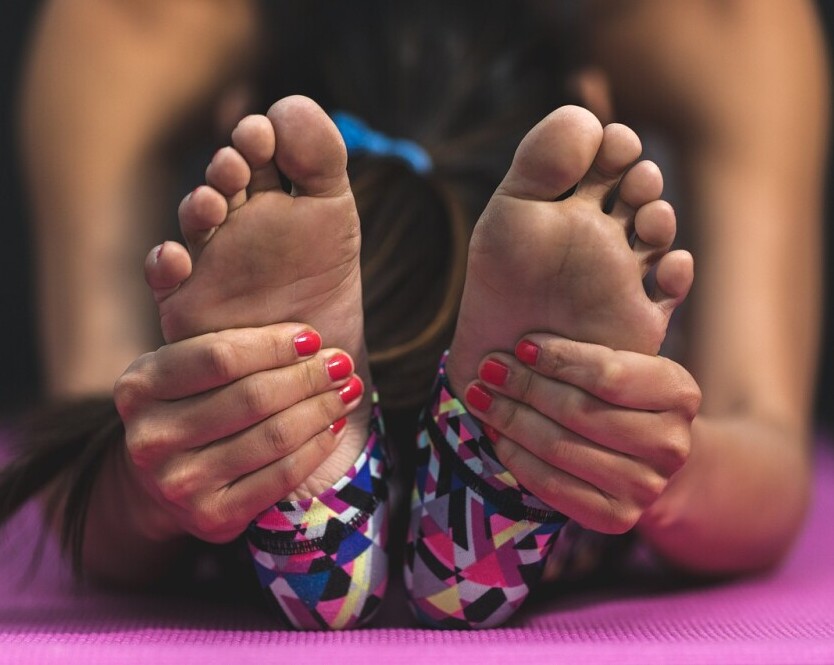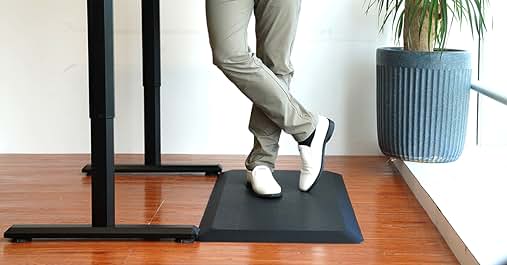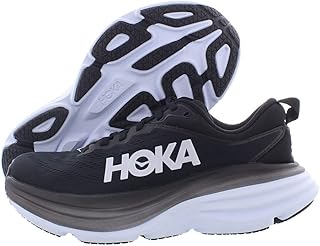Best Foot Stretches For Plantar Fasciitis
Plantar fasciitis is a common foot condition notorious for causing sharp heel pain, especially in the mornings or after periods of inactivity. This pain stems from inflammation of the plantar fascia, a thick band of tissue running along the bottom of your foot, connecting your heel bone to your toes.
One of the top causes of plantar fasciitis is overuse. Athletes, especially runners, often experience it due to the repetitive strain on their feet. However, even if you’re not running marathons, other factors can still lead to this pesky issue, such as standing for long periods, wearing unsupportive shoes, or carrying extra weight. Age and flat feet or high arches can also increase the risk.
“Here’s a little transparency: Our website contains affiliate links. This means we may receive a small commission if you click and make a purchase. Don’t worry, there’s no extra cost to you. It’s a simple way you can support our mission to bring you quality content.”
Recognizing the symptoms is critical. Typical signs include stabbing pain in the heel, which can lessen with movement but might return after standing or intense activity. The pain is usually the worst with the first steps taken in the morning. Sometimes, the discomfort can radiate down into the arch of your foot, making it hard to walk or stand.

Foot health is crucial for overall well-being. Pain in your feet can affect how you walk, stand, and carry out daily activities. Ignoring foot discomfort can lead to changes in posture and may even cause other issues in your knees, hips, or back. By understanding plantar fasciitis, you’re taking the first step in managing the condition and maintaining your quality of life.
Effective Foot Stretches for Managing Plantar Fasciitis
Stretching is an excellent way to help manage plantar fasciitis and reduce pain. Regular stretches can improve flexibility and strength in your feet, making everyday movements less painful. But what are the best stretches to try?
1. **Calf Stretch:** Find a wall and place your hands on it. Step one foot back and keep it straight while bending the front knee. Feel the stretch in your back leg’s calf. Hold for 30 seconds on each side.

2. **Towel Stretch:** Sit on the floor with your legs stretched out. Wrap a towel around the ball of your foot and gently pull it towards you. Hold for 30 seconds and switch sides.

3. **Toe Stretch:** Use your hand to gently pull your big toe towards you until you feel a stretch along the bottom of your foot. Hold for about 15-30 seconds. This can be done multiple times a day.
4. **Plantar Fascia Stretch:** Cross one leg over the other and grab your toes. Pull them back towards your shin to stretch the arch of your foot. Hold for 15-30 seconds and repeat.
Doing these stretches daily can make a difference. Aim to perform them at least twice daily, but listen to your body. Stop immediately if any stretch causes pain (besides a gentle stretch feeling).
Safety is important. Always warm up before stretching; don’t forget to cool down afterward. Never force a stretch—gentle and steady wins the race. Also, wearing supportive shoes can aid in the effectiveness of your stretching routine. The pain from plantar fasciitis won’t disappear overnight, but with dedication to your stretching routine, you’ll likely see improvement over time.

Taking Care of Your Feet at Work: Tips and Best Practices
Handling plantar fasciitis during work hours can be a real challenge, especially if your job involves standing or walking a lot. Here are some practical tips to keep foot pain at bay while you’re on the clock.
**Wear Supportive Footwear:** Invest in shoes with good arch support and cushioning. Avoid high heels and opt for shoes with a slight heel or wedge, as flat shoes can sometimes worsen things.
**Take Breaks to Stretch:** Short breaks to stretch your feet and calves can help ease stiffness and pain. Try to take a few minutes every hour to move around and do some of the stretches mentioned earlier.
**Use Anti-Fatigue Mats:** If you stand for long periods of time, consider using anti-fatigue mats. These mats provide extra cushioning that can reduce the strain on your feet.

**Adopt Good Posture:** Proper standing or sitting can have a big impact on your feet. Keep your weight evenly distributed when standing, and use a chair that supports your lower back if you sit often.
**Stay Hydrated:** Drinking plenty of water helps keep your tissues hydrated and can aid in recovery. Dehydration can make symptoms worse, so always keep a water bottle handy.

**Ice and Elevate:** Ice and elevate your feet for a while. Both of these methods can reduce inflammation and offer quick relief. Keep a small ice pack at work, or use a bag of frozen peas if needed.
**Foot Massages:** During breaks, Give yourself a quick foot massage. Rolling a tennis ball or a frozen water bottle under your foot can work wonders in easing tension.
Integrating these practices into your work routine can help manage symptoms more effectively and keep you comfortable throughout the day. Remember, small changes can make a big difference.
Choosing the Right Footwear: Shoes and Socks for Plantar Fasciitis

Picking the right shoes and socks can make a massive difference in managing plantar fasciitis. Footwear that provides proper support can help reduce pain and prevent further issues.
When it comes to work shoes, look for a few key features:
1. **Good Arch Support:** Shoes that offer solid arch support will reduce strain on your plantar fascia. Brands like Vionic, Brooks, and New Balance are known for their supportive designs.
2. **Cushioning:** Opt for shoes with cushioned insoles to absorb shock and provide comfort. Memory foam or gel inserts can add extra cushioning if needed.
3. ** Proper Fit: ** Ensure your shoes fit well. Too tight shoes can exacerbate pain, while loose shoes might not provide the necessary support. Always measure your feet before buying new shoes.

4. **Sturdy Heel:** A firm heel counter can stabilize your foot and prevent excessive movement that strains your plantar fascia. Look for shoes with a supportive and slightly raised heel.
**Top Shoe Recommendations:** Many people with plantar fasciitis find relief with specific brands and models. Brooks Addiction Walker, Asics Gel-Nimbus, and Hoka One One Bondi are just a few examples of shoes designed with foot health in mind.

Socks also play a crucial role. Here’s what to consider when choosing work socks:
1. **Compression Socks:** These can improve circulation and provide additional support to your arches. They can be particularly helpful if you’re on your feet all day.
2. **Moisture-Wicking Materials:** Socks that keep your feet dry can prevent blisters and other issues. Look for materials like merino wool or specialized synthetic fibers.
3. **Cushioned Soles:** Socks with additional padding in the soles can offer extra comfort and reduce impact.
Integrating good footwear habits into your daily routine can help you manage plantar fasciitis more effectively. Prioritizing the right shoes and socks means you’re taking proactive steps to care for your feet, which can lead to significant improvements in pain and mobility. Healthy feet mean a happier you!

Thank you for sharing this comprehensive guide to managing plantar fasciitis! I’ve been experiencing heel pain and stiffness, especially in the mornings, and I’m eager to try the stretches and tips you’ve provided. The calf stretch, towel stretch, toe stretch, and plantar fascia stretch will definitely be added to my daily routine. I also appreciate the advice on choosing the right footwear and socks, as I know I need to upgrade my shoes to ones with better arch support and cushioning. The tips for taking care of my feet at work, such as taking breaks to stretch and using anti-fatigue mats, will also be super helpful. Your emphasis on patience, gentle stretching, and listening to my body is reassuring. I’m looking forward to seeing improvements in my foot health and overall well-being. Thanks again for this informative and supportive post!
This article provides a comprehensive and practical guide for managing plantar fasciitis, covering everything from understanding the condition to effective stretches and footwear recommendations. I appreciate how it highlights the importance of foot health and offers actionable tips like stretching, using supportive footwear, and adopting good posture at work.
The inclusion of specific stretches, like the calf stretch and plantar fascia stretch, makes it easy to follow, even for those new to the condition. Also, the advice on choosing the right shoes and socks is invaluable for long-term relief. Overall, a helpful resource for anyone dealing with plantar fasciitis!
Another habit I have developed is using shoe trees to keep my shoes where they fit better. It’s a tip I picked up that keeps my feet feeling better at the end of the day.
Thank you so much for your comprehensive and enlightening article on managing plantar fasciitis. As someone who enjoys staying active, the insight you provided on the causes, symptoms, and particularly the stretches and lifestyle adjustments to manage this condition is incredibly valuable.
The detailed descriptions of the stretches are especially helpful. I particularly appreciated the step-by-step guide on the Calf Stretch and the Towel Stretch, which seem straightforward and easy to incorporate into a daily routine. Your tips on maintaining proper foot health at work, like using anti-fatigue mats and choosing the right footwear, are practical and seem like they could make a big difference in managing discomfort throughout the day.
I also found the transparency about affiliate links refreshing, it’s great to see a site that supports its mission while also being upfront about its practices. It’s clear that a lot of thought and expertise went into crafting this article, and it serves as a great resource for anyone struggling with foot pain from plantar fasciitis.
For teenagers dealing with this or similar issues, perhaps due to sports or increasing physical activity, your advice can be a game-changer. It’s cool to think that just a few simple changes in daily habits and some attention to how we treat our feet can improve our overall comfort and performance.
Thanks again for sharing your knowledge and tips. I’m looking forward to trying out some of these stretches and seeing the difference they make. Keep up the great work on your site!
Best regards,
Eric
Back in my college days, when I took a Physical Education course focused on athletics, we had all these intense activities like jogging 10 laps around the oval and doing long jumps. After all that running and jumping, I started feeling that sharp heel pain, especially in the morning. That’s when I realized what I was dealing with—yep, plantar fasciitis. It was super frustrating. After chatting with friends and doing a bit of research, I found out how important stretching is. I started doing calf stretches and towel stretches, and they’ve seriously made a big difference. Now, I make it a habit to stretch my feet every day. It’s like a little self-care moment that really helps.
I also figured out that wearing the right shoes is crucial. I ditched my old flats for supportive sneakers, and it felt like walking on clouds. Plus, I’ve been taking more breaks during the day to stretch and move around, which helps keep the stiffness away. Oh, and I even got an anti-fatigue mat for my workspace. It’s all about those little changes. Thanks for sharing your tips!